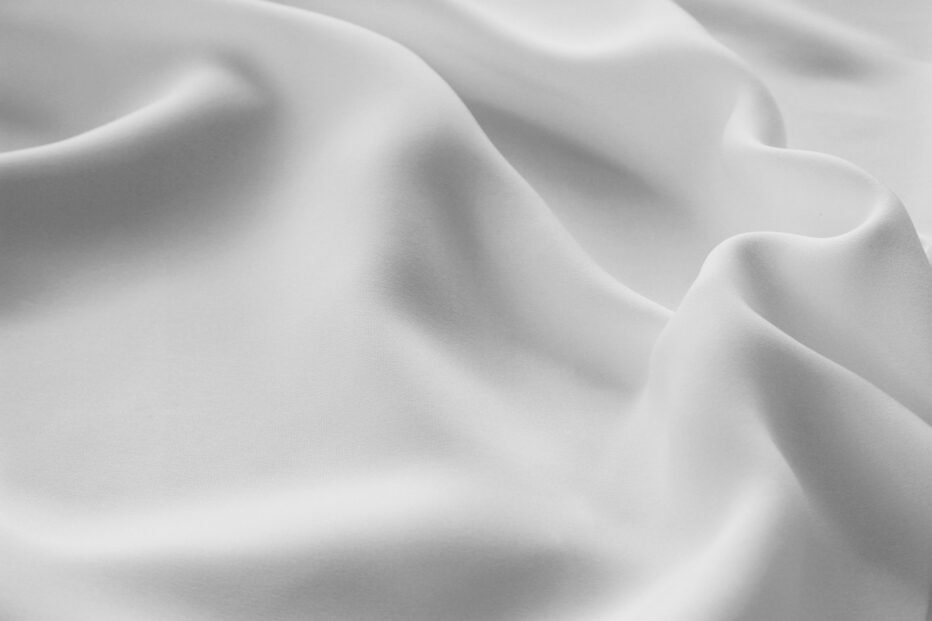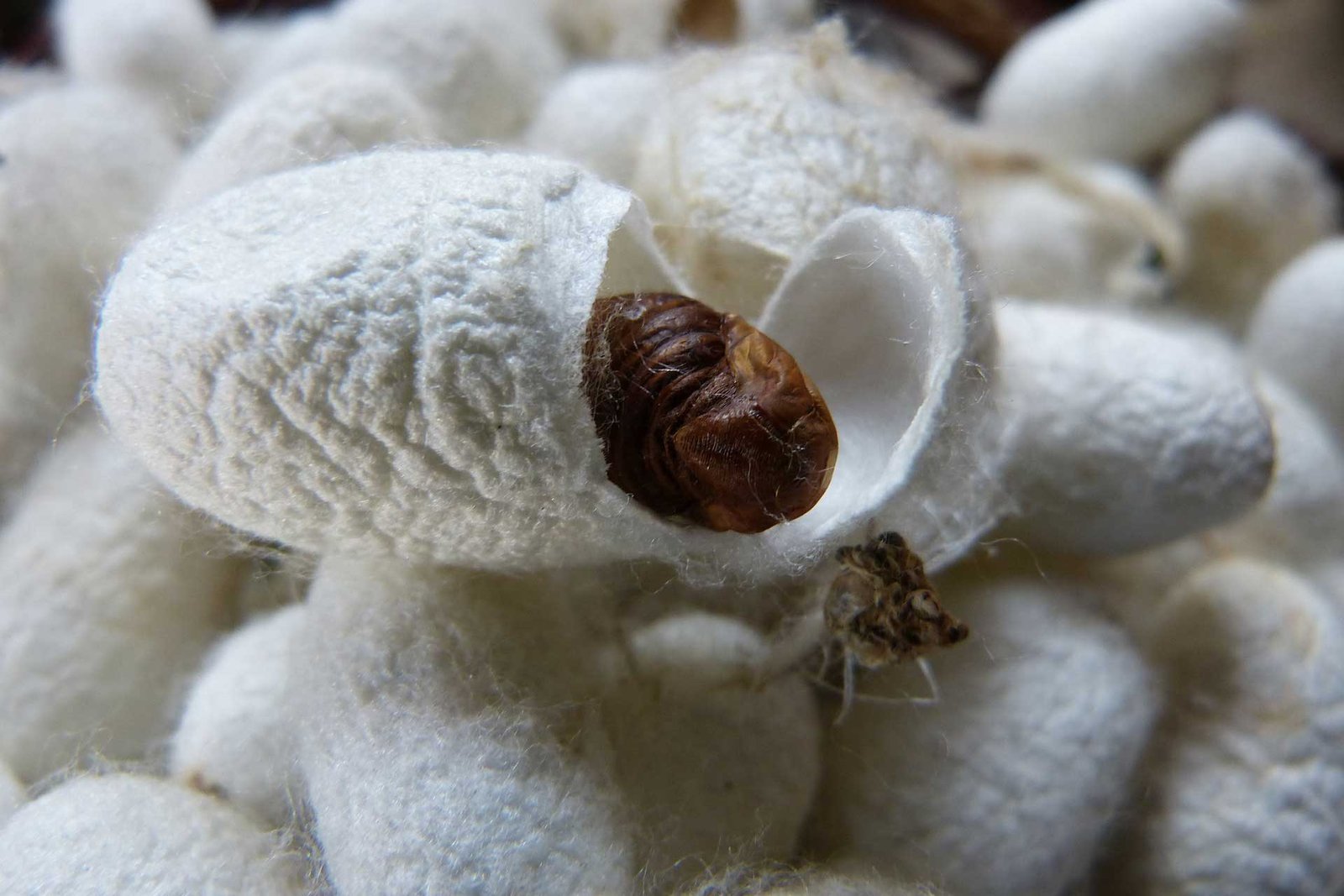Silk is one of the oldest fibers known by humankind. It is a natural protein fiber, which has been used in textile manufacture for at least 5,000 years. About 90% of commercial silk fibers employed in the textile industry come from Lepidopteran silkworms from the Bombycidae family. In the textile industry, it is commonly referred to “mulberry silk”.

Description
Silk is one of the oldest fibers known by humankind.
Silk is a very special natural fiber. Textile-used silk was often obtained from moth caterpillars. Long considered a luxury fiber, it is sometimes referred to as the “queen of fabrics”. Silk is the only natural filament fiber and is soft, lustrous, shiny, and smooth to the touch.
Background
Story
According to archeological evidence, silk has been used for at least 5000 years. According to Chinese legend, Empress Hsi Ling Shi, wife of the Yellow Emperor, sat under a mulberry tree and discovered that silkworm cocoons were made of a delicate thread. The Empress then learned how to make luxurious fabric by spinning the silk. It became very popular during the Han Dynasty, where silk became a currency that was traded.
Manufacturing
Silk can be produced by several insects, but the most common one is from caterpillar. Female moths lay 200-300 eggs over a couple of days and they grow from 2mm to 70mm in length during 25-30 days of non-stop eating. The silkworm starts to spin a cocoon of silk when it is fully grown, and one
cocoon creates almost a mile of filament.

Expertises
Characteristic
- Smooth and drapes with a graceful flow
- One of the strongest natural fibers -stronger than cotton and linen
- Poor conductor of heat
- High elasticity
- Absorbs and releases moisture quickly
- Fades and weakens under continuous sunlight and sweat
- Sheds dust and dirt easily
- Takes dyes very well, and solid or vivid colors can be achieved
- Tends to shrink
- Wrinkle resistant
- Easily gathers static electricity
Growth
According to Chinese legend, around 2700 B.C. Empress Hsi Ling Shi [Sigh-Ling-She] sat under a mulberry tree drinking tea. She began playing with a silkworm cocoon and discovered it was made of a delicate thread. The Empress learned to spin the silk and to make luxurious fabric.
Archeological evidence indicates that silk production may have begun as early as 5000BC – that’s more than seven thousand years ago. Sericulture is the raising of silkworms and the production of silk. The ancient Chinese kept the details of sericulture a secret – a secret coveted by the rest of the world. Today silk is produced mostly in China, India, and Japan.
Silkworms, which are really caterpillars, are fed mulberry leaves, mulberry leaves, and only mulberry leaves. They never stop eating. That means feedings every four hours.
Harvesting
After 35 days of eating, the silkworm spins a cocoon of silk. It creates nearly a mile of filament! One can by hand, boil the cocoons, pick out the end of a silk filament, and thread it onto a reel. This work may also be done in a manufacturing plant. Several filaments are combined and wrapped on a reel creating a yarn.
Properties & Uses
The length of the silk is important in creating high-quality fabric. Long fibers make long, smooth surfaces, which is why silk reflects light and has that special luster we value. But, short fibers and broken fibers may also be spun to create lower quality fabrics.
For all its delicacy, silk is as strong as the wire of equal thickness. However, it deteriorates over time. As silk ages, it becomes dry and brittle and will literally fall to pieces in one’s hands. Much like shattered glass, silk will develop fissures, crumble, and fall off in chunks. Feeding all those hungry caterpillars is expensive – so silk fabric is expensive and used primarily in high-end apparel and furnishings.
Social
12k followers
30k likes
Youtube
22k subscribers
8k followers
Have a project in mind?
If you have a great idea, reach out to me. Whether it is a small or big project, I will listen first and get back to you with a plan.

